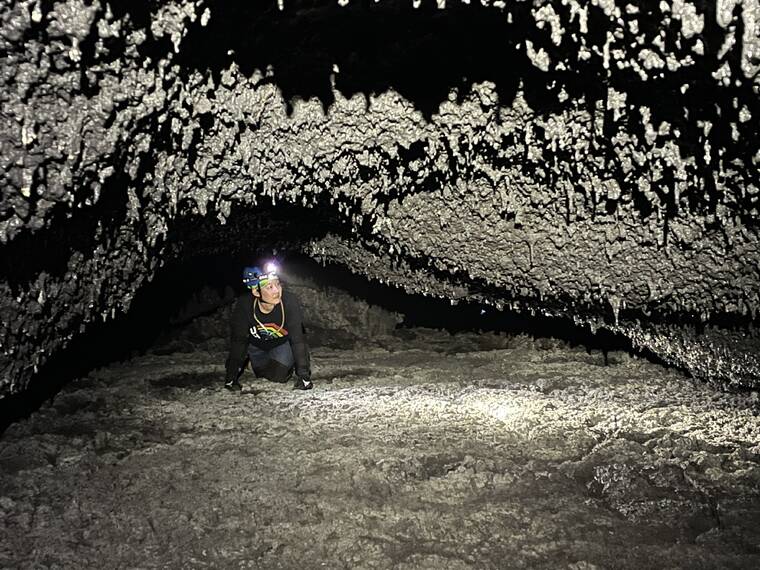University of Hawaii researchers have received more than a million dollars from the federal government to study the ecosystems within the Big Island’s lava tubes.
The National Science Foundation this month awarded a $1.29 million grant to a pair of UH-Manoa professors and a University of Tennessee-Knoxville professor for a four-year study of subterranean biodiversity.
“We don’t necessarily know a lot about the populations that live in these lava tubes,” said UH-Manoa assistant professor Rebecca Chong. “The first cave-adapted species on the island was only discovered about 50 years ago.”
Associate professor Megan Porter said there have since been about 40 cave-adapted arthropod species discovered living beneath the island’s lava flows, but little is known about how their populations have developed.
“The Big Island is the youngest island, and it has five volcanoes and lava flows of all different ages,” Porter said. “So we’re targeting lava flows based on their age and looking at multiple tubes in each flow so we can see how these populations change over time.”
Porter added the study likely will uncover new species previously unknown to science. Porter had previously discovered a new species, the thread-legged bug, in a Big Island lava tube in 2019.
Chong said learning more about subterranean ecosystems is important because of how they are subtly intertwined with above-ground ecosystems.
For example, she said, many species adapted to life in lava tubes subsist off of juices extracted from the roots of ohia trees that penetrate the roofs of the lava tubes. But because of the prevalence of rapid ohia death on the Big Island, that source of nutrition is being threatened, and it is unclear whether other invasive root species can fill that niche.
“Subterranean habitats are very vulnerable to impacts, especially human impact,” Chong said, adding that because of the looming threat of biodiversity loss on the island, discovering the interplay between different ecosystems is important for preserving native species.
In addition to the surveys themselves, the NSF funding also will support a training program teaching students and researchers about biodiversity research, yearlong research internships for undergraduates, and community outreach programs at the Bishop Museum on Oahu.
Email Michael Brestovansky at mbrestovansky@hawaiitribune-herald.com.


